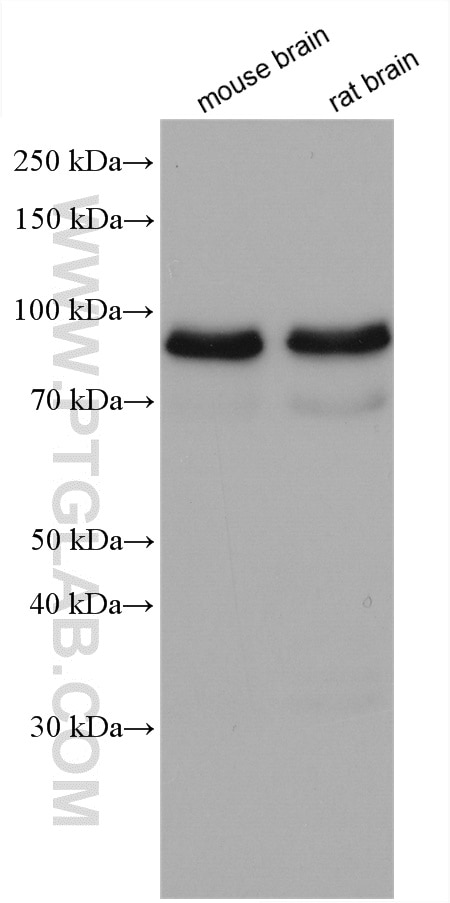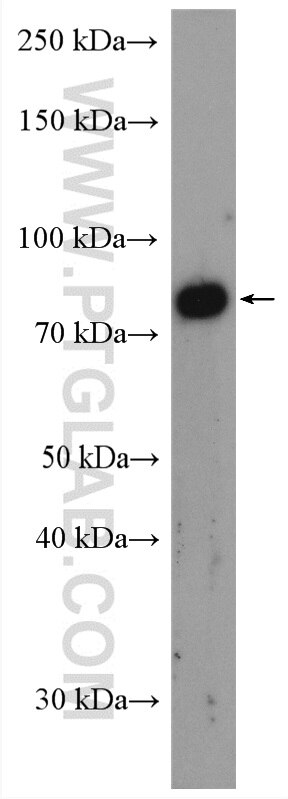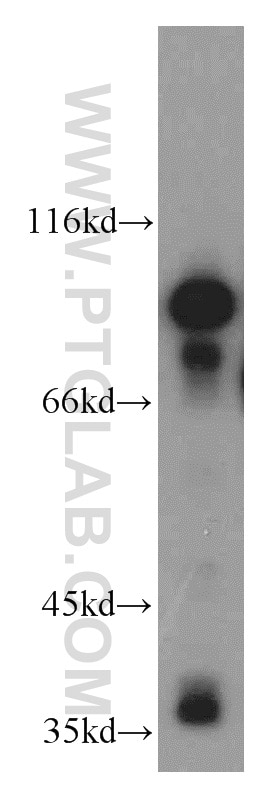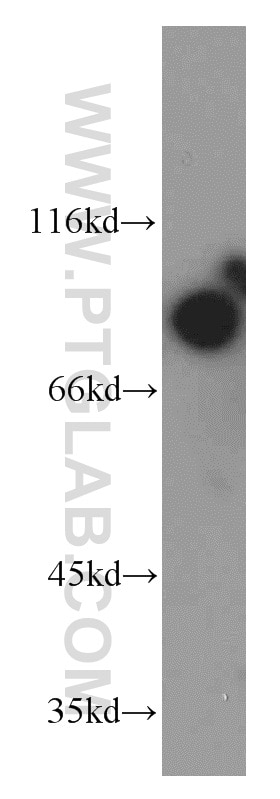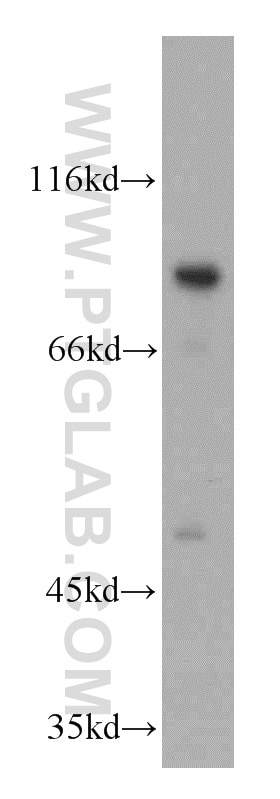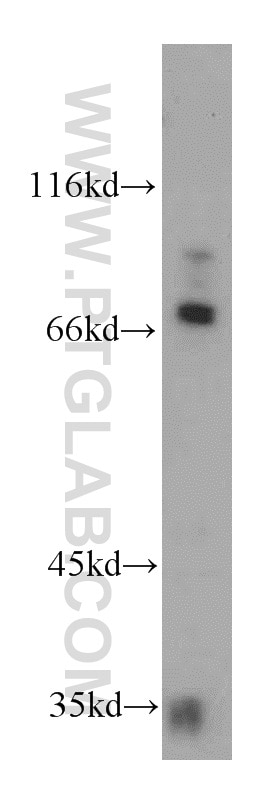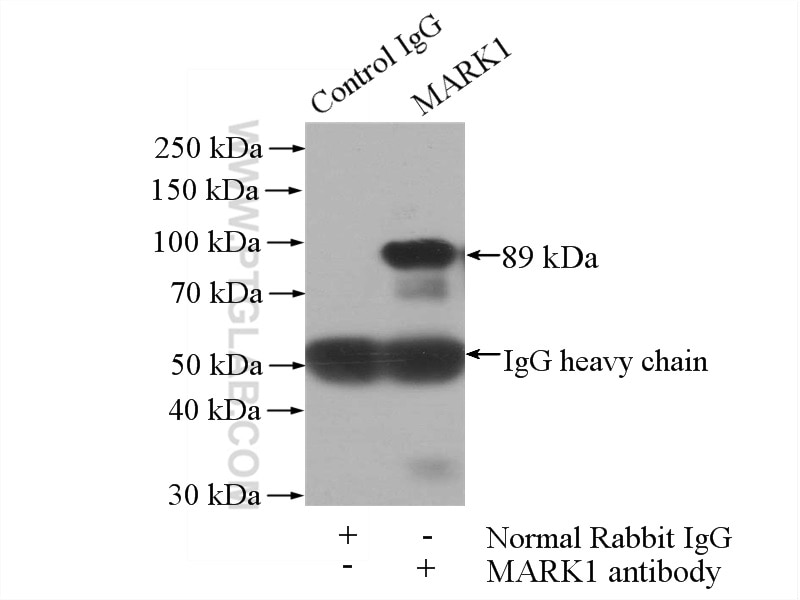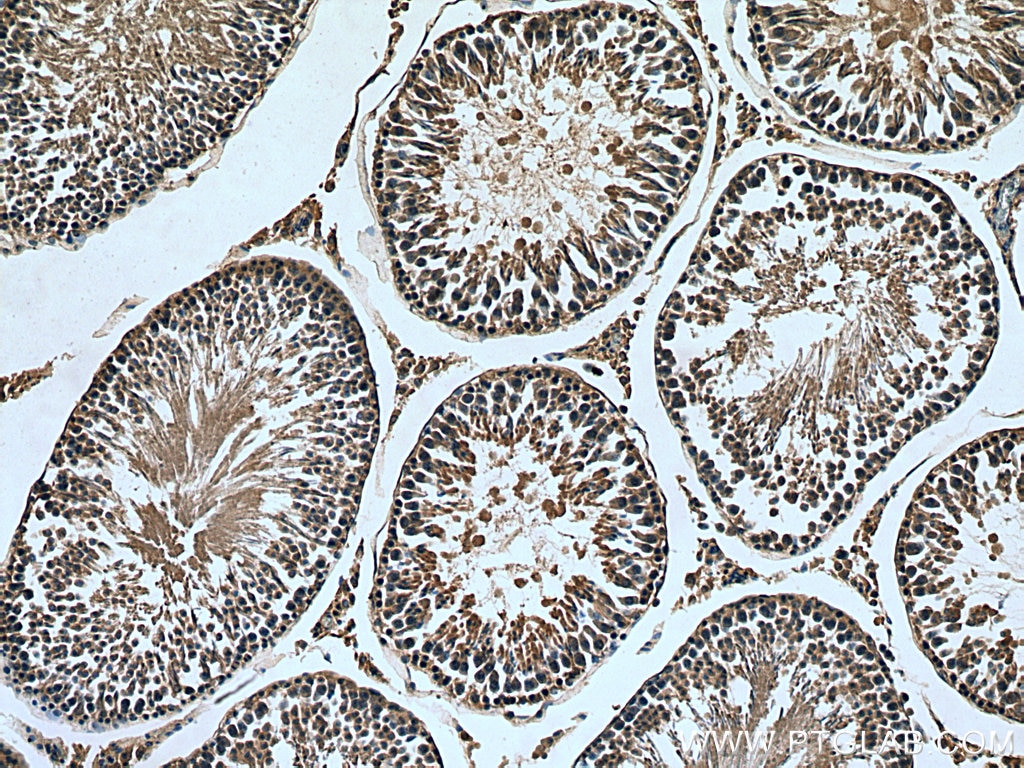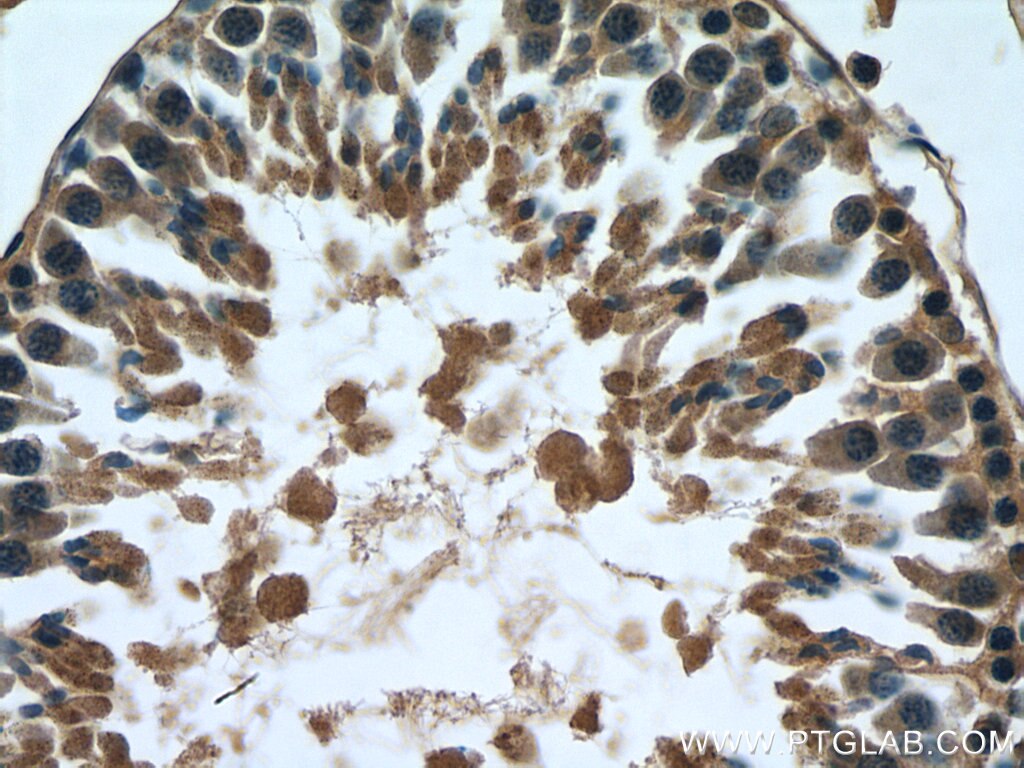- Phare
- Validé par KD/KO
Anticorps Polyclonal de lapin anti-MARK1
MARK1 Polyclonal Antibody for WB, IP, IHC, ELISA
Hôte / Isotype
Lapin / IgG
Réactivité testée
Humain, rat, souris
Applications
WB, IP, IHC, ELISA
Conjugaison
Non conjugué
N° de cat : 21552-1-AP
Synonymes
Galerie de données de validation
Applications testées
| Résultats positifs en WB | tissu cérébral de souris, cellules HeLa, cellules SH-SY5Y, tissu cérébral de rat, tissu rénal de souris |
| Résultats positifs en IP | tissu cérébral de souris |
| Résultats positifs en IHC | tissu testiculaire de rat, il est suggéré de démasquer l'antigène avec un tampon de TE buffer pH 9.0; (*) À défaut, 'le démasquage de l'antigène peut être 'effectué avec un tampon citrate pH 6,0. |
Dilution recommandée
| Application | Dilution |
|---|---|
| Western Blot (WB) | WB : 1:1000-1:6000 |
| Immunoprécipitation (IP) | IP : 0.5-4.0 ug for 1.0-3.0 mg of total protein lysate |
| Immunohistochimie (IHC) | IHC : 1:50-1:500 |
| It is recommended that this reagent should be titrated in each testing system to obtain optimal results. | |
| Sample-dependent, check data in validation data gallery | |
Applications publiées
| KD/KO | See 4 publications below |
| WB | See 9 publications below |
| IP | See 2 publications below |
Informations sur le produit
21552-1-AP cible MARK1 dans les applications de WB, IP, IHC, ELISA et montre une réactivité avec des échantillons Humain, rat, souris
| Réactivité | Humain, rat, souris |
| Réactivité citée | rat, Humain, souris |
| Hôte / Isotype | Lapin / IgG |
| Clonalité | Polyclonal |
| Type | Anticorps |
| Immunogène | MARK1 Protéine recombinante Ag16225 |
| Nom complet | MAP/microtubule affinity-regulating kinase 1 |
| Masse moléculaire calculée | 795 aa, 89 kDa |
| Poids moléculaire observé | 85-89 kDa, 72 kDa |
| Numéro d’acquisition GenBank | BC113869 |
| Symbole du gène | MARK1 |
| Identification du gène (NCBI) | 4139 |
| Conjugaison | Non conjugué |
| Forme | Liquide |
| Méthode de purification | Purification par affinité contre l'antigène |
| Tampon de stockage | PBS avec azoture de sodium à 0,02 % et glycérol à 50 % pH 7,3 |
| Conditions de stockage | Stocker à -20°C. Stable pendant un an après l'expédition. L'aliquotage n'est pas nécessaire pour le stockage à -20oC Les 20ul contiennent 0,1% de BSA. |
Informations générales
MARK1, also named as MAP-microtubule affinity regulating kinase 1, which form a subfamily of the calcium/calmodulin-dependent protein kinase (CAMP) group of kinases(PMID: 22670221).It is involved in cell polarity by phosphorylating the microtubule-associated proteins MAP2, MAP4 and MAPT/TAU at KXGS motifs, causing detachment from microtubules, and their disassembly. MARK1 also act as a regulator of the neuronal migration and Wnt signaling pathway.It has 3 isoforms which molecular weight is 89,84,72 kDa. This antibody may detect all of the isoforms.
Protocole
| Product Specific Protocols | |
|---|---|
| WB protocol for MARK1 antibody 21552-1-AP | Download protocol |
| IHC protocol for MARK1 antibody 21552-1-AP | Download protocol |
| IP protocol for MARK1 antibody 21552-1-AP | Download protocol |
| Standard Protocols | |
|---|---|
| Click here to view our Standard Protocols |
Publications
| Species | Application | Title |
|---|---|---|
Mol Cell An AMPK-Independent Signaling Pathway Downstream of the LKB1 Tumor Suppressor Controls Snail1 and Metastatic Potential.
| ||
Nat Commun TNK1 is a ubiquitin-binding and 14-3-3-regulated kinase that can be targeted to block tumor growth.
| ||
Cell Rep DIXDC1 Phosphorylation and Control of Dendritic Morphology Are Impaired by Rare Genetic Variants. | ||
Cell Commun Signal Doublecortin undergo nucleocytoplasmic transport via the RanGTPase signaling to promote glioma progression. | ||
J Biol Chem Postsynaptic density 95 (PSD-95) serine 561 phosphorylation regulates a conformational switch and bidirectional dendritic spine structural plasticity. | ||
PLoS One MARK/Par1 Kinase Is Activated Downstream of NMDA Receptors through a PKA-Dependent Mechanism. |
Avis
The reviews below have been submitted by verified Proteintech customers who received an incentive forproviding their feedback.
FH Manish (Verified Customer) (06-09-2020) | The antibody works really well. We dilute it 10 fold and still get strong bands on western blots.
|
